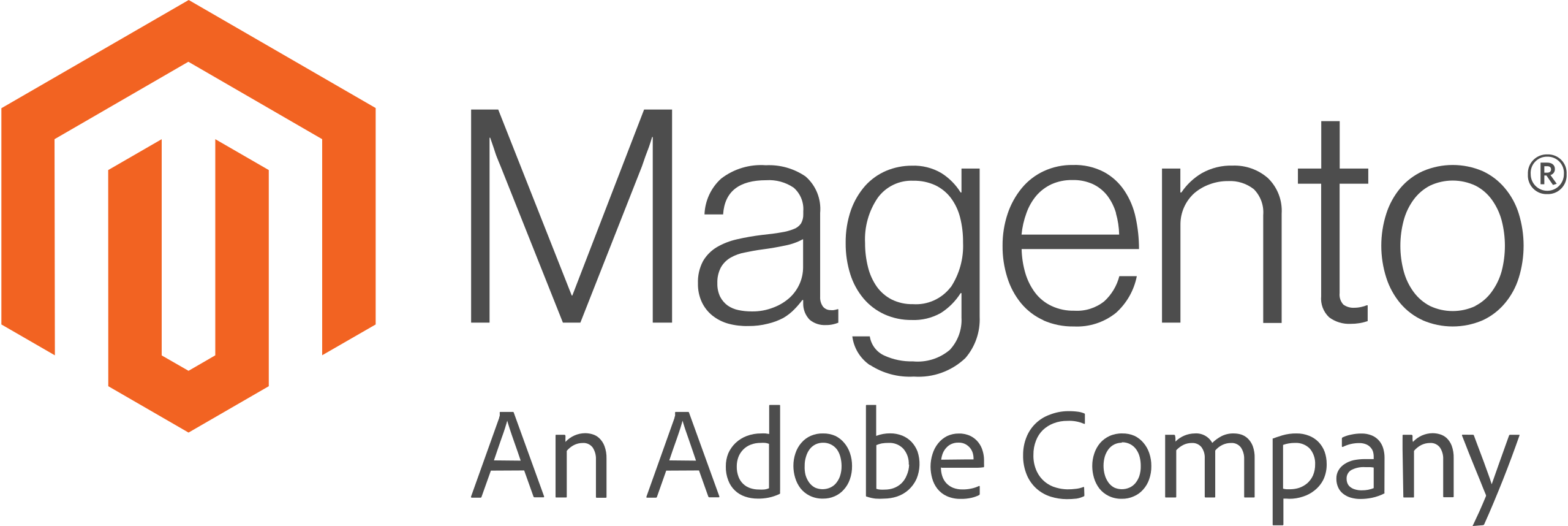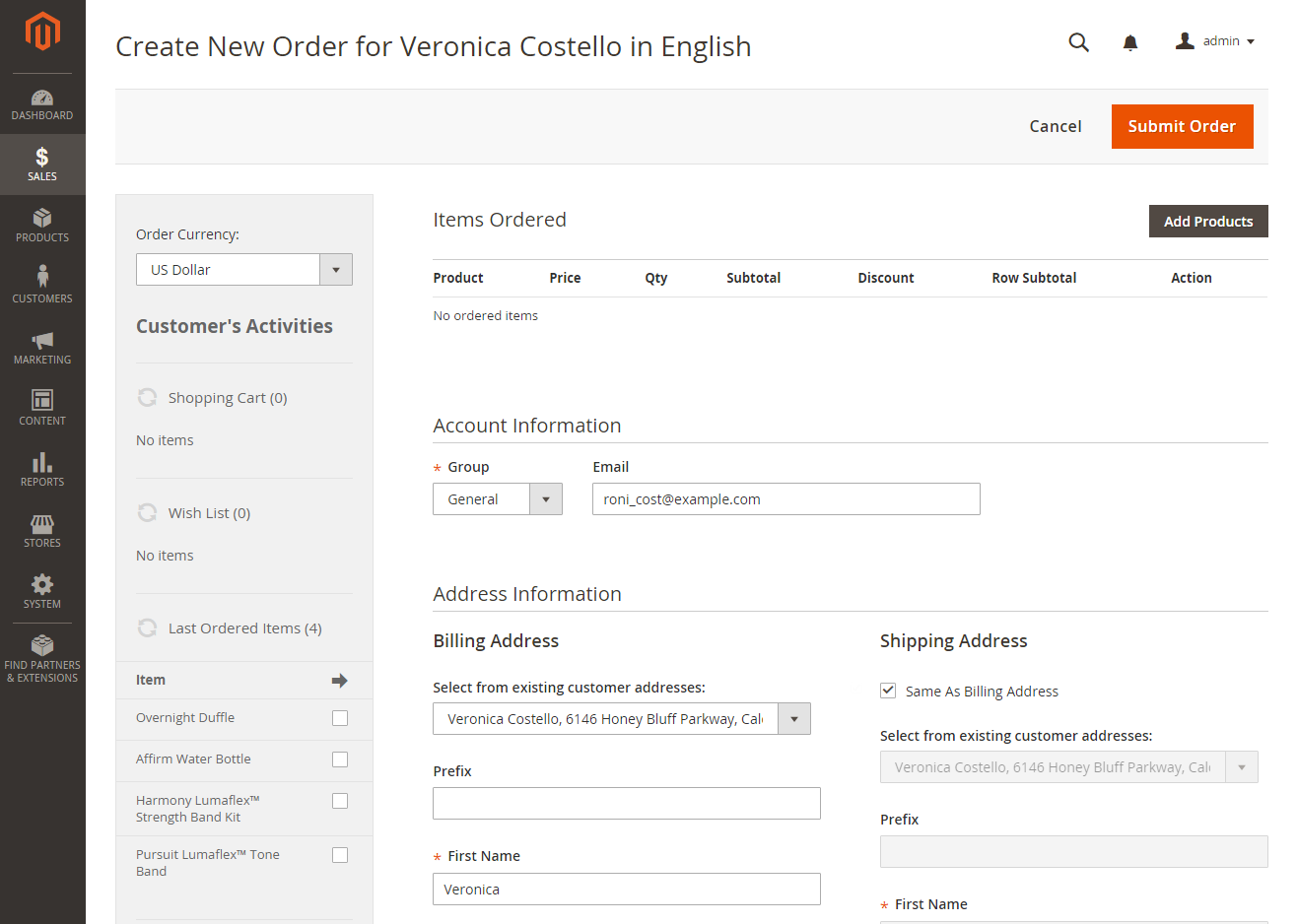Magento for E-commerce
Magento is an e-commerce platform purchased in 2018 by Adobe, currently distributed under the name Abobe Commerce Powered by Magento. Magento is one of the world’s most widely used tools for online commerce.
It is open source, adaptable to any project, and scalable: compared to other solutions, it allows not only to build and manage a customized online store with eye-catching graphics, but also to organize the catalog, order fulfillment, and payments in several stores simultaneously in an advanced way. All this, providing in-depth, and appropriately aggregated, data that is essential for administering your business.
On the other hand, Magento is, compared to other e-commerce solutions, certainly a complex tool and only partially free, as we shall see, so it is therefore suitable for medium and large projects.
In 2015, Magento 2 was released, the new version of Magento ecommerce that improved usability with a more user-friendly interface. Currently, Magento is used by about 200 thousand ecommerce stores worldwide and is the main choice of big brands such as Olympus, Puma, Seat, Burger King, Hp, Canon and many others.

What is Magento ecommerce: the main features, explained
Let’s look in more detail at the main features of Magento ecommerce, including the features of Magento 2.
- Is Magento free?
There is a free version of Magento, it is called Magento Open Source – formerly known as Magento Community Edition – and although it can be used to build a small website with an online store, it is mainly exploited by developers to design and test new e-commerce solutions. However, the free version of Magento must be installed on a web server – so a small budget must be set aside to buy hosting and domain services.

Given the complexity of the product, building ecommerce websites with Magento requires experts: shopkeepers or managers will then be able to manage the catalog and warehouse through the graphical interface dedicated to them.
- Magento is open source and customizable.
Magento ecommerce is an open source platform: it means that the code with which the software is built is public and modifiable. For those who have an ecommerce website in Magento, this translates into the ease of finding developers who work with Magento and the ability to change, without too much trouble, their vendor (i.e., the agency or freelancers who built the online store and take care of its development and maintenance). In addition, experienced developers can totally customize Magento to fit your needs.

Magento is easily scalable.
Scalability is one of the most important factors to keep in mind when building an online store: it means that a small shop can grow exponentially without having to change e-commerce platform. The scalability of Magento and Magento 2 is one of its main advantages: the platform’s functions can be adapted to various types of catalogue and different amounts of web traffic.
Drag & drop content management.
You can easily create and modify your website’s contents – both general product category pages and detailed pages for individual products – using a drag and drop system that allows you to move the various modules around the page however you like. The interface used to manage the online catalogue is also intuitive, and so these activities can be carried out without needing the help of developers.
Advanced warehouse management.
Magento integrates seamlessly with other IT systems for managing stock levels and allows you to manage various aspects of order fulfilment like home delivery and collection in store, payments and warehouse logistics. You can also sell B2B or B2C using essentially the same infrastructure.
Advantages and disadvantages of a Magento online shop
We will now try to summarise the pros and cons of Magento and Magento 2. Whether or not we recommend you use this e-commerce platform certainly depends on the size of the project and the budget you have available.
The advantages of Magento:
- Magento is a highly scalable e-commerce platform. If your shop is small or medium-sized but plans to grow, you won’t need to change platform.
- Magento is open source: this means it is highly customisable and can be adapted to any project. It also means changing supplier – such as the agency that built your online shop, for example – is relatively painless.
- Magento allows advanced monitoring both of the site’s content and of stock levels, payments and logistics.
- Magento can be integrated with other management software used at the company, making it particularly suitable for dealing with large catalogues.

The disadvantages of Magento:
- The free version of Magento is limited. The prices of the paid version are based on the gross market value (GMV) of goods and the average order value (AOV), which can make using the platform expensive.
- Magento is a rather complex platform and is not always intuitive. Building an online shop with Magento often requires the support of an agency or expert developers.
- You need to pay for web hosting. Magento Ecommerce is a tool for building and managing an online shop, but you still need to buy web space to host your store.
Overall, then, Magento is more suited to complex online shops, such as those run by major brands or medium-sized and large stores, or online retail projects that are hoping to grow in the future. Small shops, craftspeople and creatives will find other e-commerce tools more affordable.
Useful resources for Magento Ecommerce
Magento is a complex tool, and it has a series of functions that are worth looking into in more detail, including as a retailer, so you can take full advantage of the platform.
Adobe has therefore provided a range of detailed resources and manuals, including a guide to putting together your inventory, to managing your catalogue and categories on your e-commerce site, and to adding and choosing images and videos depicting your products.
Retailers and businesses interested in Magento Ecommerce should also have a look at the success stories Adobe has assembled to work out which projects the platform is best suited to and how to make the most of it. The Magento blog also offers useful hints and tips for managers, shop owners and firms interested in creating an online store with the tool.
Finally, Adobe also offers official online training courses – rather expensive to tell the truth – including, for example, some on managing a shop built with Magento Ecommerce.

